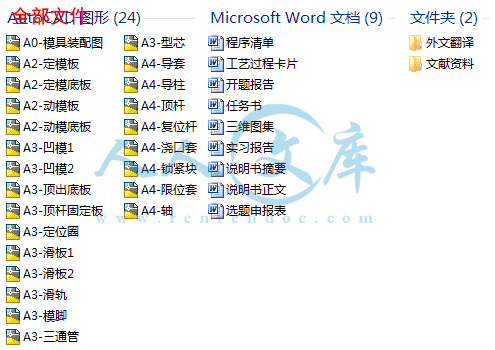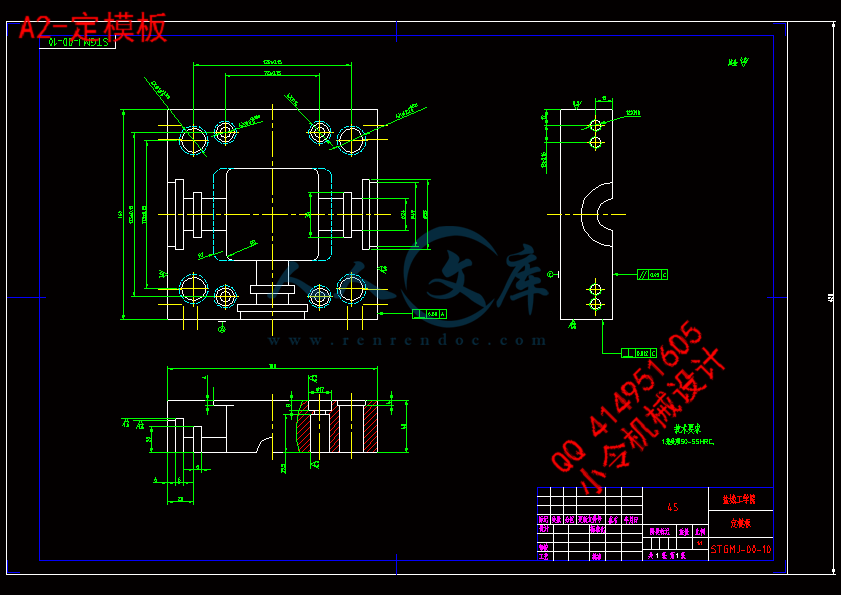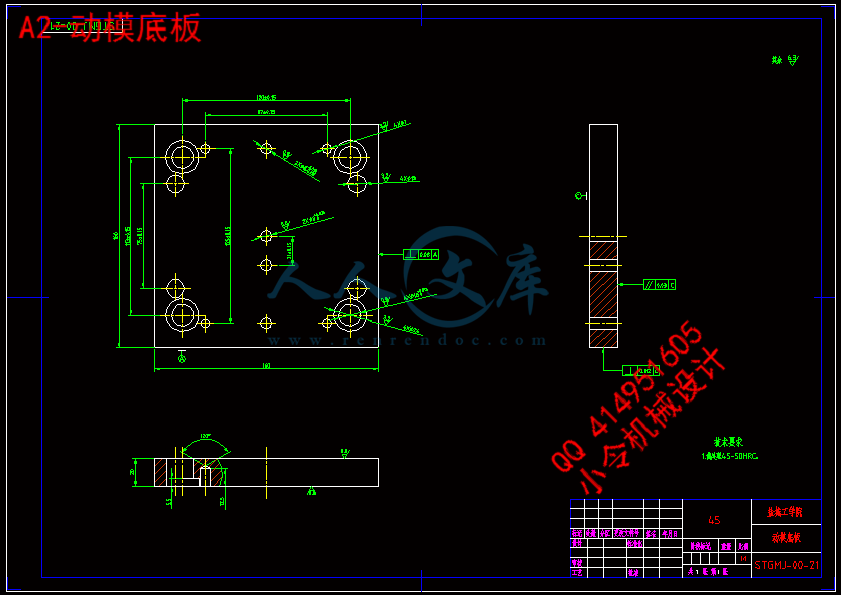三通管注塑模具设计
摘 要:模具工业是国民经济的基础工业,而塑料模具又是整个模具行业的霸主。本次设计的是聚氯乙烯塑件(三通管),因为该制件三面通孔,故采用的是一模一腔注射,使用双分型面模具,利用侧向抽芯机构去除型芯。注射机的选择应依据制件的质量和体积,并且对注射剂的参数进行校核。该产品采用点浇口注射,并利用间隙排气。型腔是由两镶块构成,利用斜滑轨侧向分型,并通过限位销限制抽芯的距离。该模具通过推杆推出制件,闭合时,同样在导柱和导套的导向作用下通过复位杆的弹簧使复位杆先于型腔复位,以免顶杆碰到型腔,损坏模具。借助三维软件PRO/E进行模具的三维造型,并对模具分析,简化了设计过程,减少了劳动量。本次模具设计合理,符合实际应用,能够生产结构合理、精度高、表面质量好的塑料模具。
关键词:注射模;型腔;型芯;PRO/E
Design of Injection Mold for Tee
Abstract: The mold industry is the national economical foundation,and the plastic mold is also the overlord in the entire mold industry. The design is plastic parts of HPVC. Because the parts have three holes distrabute in three sides, it has one part in one cavity, seperates in two position, takes out the core by side. The selection of injection machine depends on the volume and quality of the parts, then it needs to check whether the injection machine’s parameters is in line with requestions. The mold injects plastic through a gate of point, and push the gas out of the mold from the gap. The cavity is formed with two inserts, and uses Oblique slider to separate the mold, and limites the distance of the pin. The mold pushes the part with the putter. when closes it, the guiding Column and case guide the spring make the reposition pole back to it’s former location, in order to prevent the pole encontered the cavity to hurt the mold.With the help of the software PRO/E, it can make three-dimensional of the mold, to simplify the designing process and reduce manual labor. The design is reasonable, in line with actual application, and it can produce right construction, high precision, well surface quality plastic mold.
Key word: Injection mold; Cavity; Core; PRO/E;
目 录
1 绪论1
2 塑件的工艺分析2
2.1 塑件材料成型工艺分析2
2.2 塑件结构工艺性分析3
2.3 型腔布局及分型面的选择4
3 成型设备的选择6
3.1 估算制件的体积和质量6
3.2 选择注射机6
3.3注射机有关参数的校核6
3.4 模架的选择7
4 注射模的结构设计9
4.1 浇注系统的设计9
4.1.1 主流道的设计9
4.1.2 主流道衬套的固定10
4.1.3分流道的设计10
4.1.4浇口的设计11
4.1.5排气方案的确定11
4.2 成型零部件设计12
4.2.1成型零部件结构设计12
4.2.2成型零件工作尺寸计算13
4.3 导向机构与定位机构的设计16
4.3.1 导柱的结构16
4.3.2 导套的结构17
4.3.3 锁紧块的结构17
4.4 脱模机构的设计18
4.5 侧向抽芯机构的设计19
5 温度调节系统的设计21
6 模具的装配22
6.1 模具的装配顺序22
6.2 开模过程分析22
7 凹模的机械加工仿真23
8 结论28
参考文献29
致 谢30
附 录31
1 绪论
本次设计的题目是三通管的注塑模具设计,课题以社会实际产品为原型,设计一副能够生产所给塑件、结构合理、能保证制品的精度、表面质量的塑料模具。
随着塑料制品在机械、电子、交通、国防、建筑、农业等各行业 广泛应用,对塑料模具的需求日益增加,塑料模在国民经济中的重要性也日益突出。模具作为一种高附加值和技术密集型产品,其技术水平的高低已经成为一个国家制造业水平的重要标志之一。
本设计严格按照模具设计的步骤,及模具设计中的要求来设计的:对塑件工艺性的分析、型腔数量的确定、分型面的确定、注塑机的选择及校核、浇注系统的设计、成型零件的设计等,其次,还要对模具导向机构、脱模机构、抽芯机构进行结构设计,温度调节系统对模具也有重要作用,模具温度直接影响到塑件的质量如收缩率、翘曲变形、耐应力开裂性和表面质量等,并且对生产效率起到决定性的作用。设计中要进行一整套的程序,自己要在各方面的都应了解。在塑料材料、制品设计及加工工艺确定以后,塑料模具设计对制品质量与产量,就决定性的影响。首先,模腔形状、流道尺寸、表面粗糙度、分型面、进浇与排气位置选择、脱模方式以及定型方法的确定等,均对制品(或型材)尺寸精度形状精度以及塑件的物理性能、内应力大小、表观质量与内在质量等,起着十分重要的影响。其次,在塑件加工过程中,塑料模结构的合理性,对操作的难易程度,具有重要的影响。再次,塑料模对塑件成本也有相当大的影响,除简易模外,一般来说制模费用是十分昂贵的,大型塑料模更是如此。加工工艺要求、塑件使用要求、塑件外观要求,起着无可替代的作用。高效全自动化设备,也只有装上能自动化生产的模具,才能发挥其应有的效能。此外,塑件生产与更新均以模具制造和更新为前提。
同时在设计中也要求对机械的相关知识有相当的了解:机械制图、公差与配合、机械制造、材料成型、数控技术等。对模具的仿真过程也是对我们能力的一种培养,设计完成之后,对模具装配的可靠性检查也是模具设计过程中必不可少的。
2 塑件的工艺分析
制品的分析是对所要成型的产品有个初步的了解,在接受设计任务书以后就要对塑料的品种、批量的大小、尺寸精度与技术条件,产品的功用及工作条件有个整体概念,以便在设计模具时优选各种方式来成型塑件。







 川公网安备: 51019002004831号
川公网安备: 51019002004831号